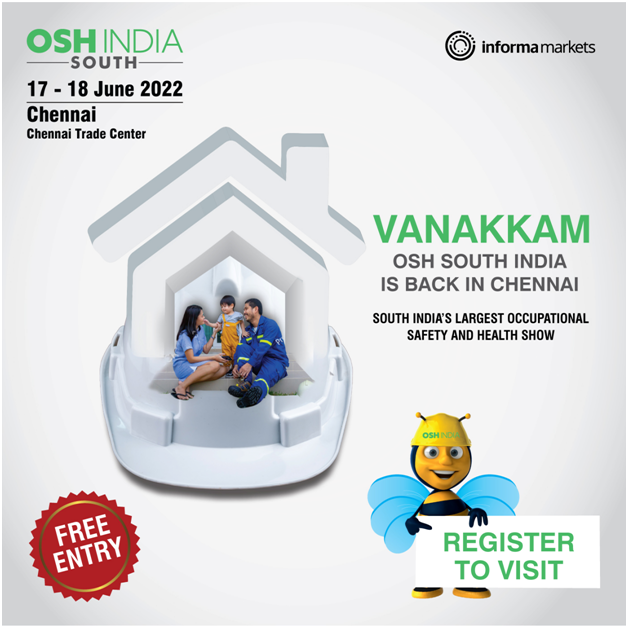EN ISO 374 -1: 2016 Understanding the New Regulation.
The norm EN 374 :2016 establish the requirements for gloves focus on the user's protection against chemicals and microorganisms.
The question is why has the standard changed and have new tests?
The standard has been updated to address the following needs:
- To ensure consistency between the results
- To better assist users in their glove choice by more accurately reflecting the chemicals being used throughout the industry.
- The standard stipulates the requirements of manufacturers to test for Permeation, Penetration and Degradation.

By Biman Banerjee, Senior Manager - Branded Sales, Mallcom ( India ) Ltd.
It is divided in following parts:
ISO EN 374-1:2016: Terminology and requirements for chemical risks. Based on three test methods:
- EN 374-2:2014: resistance to penetration.
- EN 16523-1:2015: permeation by chemical liquids under continuous contact. This regulation updates the section 3 from EN374.
- EN 374-4:2013: Determination of resistance to degradation by chemicals.
Penetration: Penetration is the movement of a chemical or micro-organisms through pinholes or other imperfections in a protective glove material at a non – molecular level.
Permeation: The rubber and plastic films in gloves are the barriers to chemicals. It is therefore necessary to measure break through time or the time taken for the hazardous liquid to come in contact with the skin. Each chemical tested is classified in terms of break through time performance level 0-6. Part I of EN ISO 374- 1:2016 stipulates that permeation testing still requires 3 samples to be taken from the palm. There is also a new requirement added for gloves 400 mm or longer. 3 additional samples must be taken from the cuff area and tested for permeation and degradation.
The Permeation Performance Level (PPL) remain unchanged as per the new regulation:
| Breakthrough Time (BTT) / minutes | Performance Level |
|---|---|
| >10 | Level 1 |
| >30 | Level 2 |
| >60 | Level 3 |
| >120 | Level 4 |
| >240 | Level 5 |
| >480 | Level 6 |
Gloves are now separated into 3 classification types based on Permeation performance:
| Classification | Minimum Performance Level Required | Minimum No. of Chemicals from the List of 18 chemicals |
|---|---|---|
| Type A | 2 (minimum 30 min. BTT) | 6 |
| Type B | 2 (minimum 30 min BTT) | 3 |
| Type C | 1 (minimum 10 min BTT) | 1 |
Questions were raised on the new regulation as far as permeation test was concerned. :
Are the 6 extra chemicals included in the permeation test more aggressive than the previous list of 12 chemicals?
No, they were added because they are more representative of chemicals in the modern industrial environment.
Are the Type A, Type B, Type C markings mandatory on the pictogram?
Yes the pictogram must have the markings Type A, Type B or Type C.
Degradation:
Sometimes chemical protective gloves can act as sponges, soaking up the liquids and holding them against the skin. This degrades the glove. Degradation is the change in one or more physical characteristics of a glove caused by contact with a chemical. Indications of degradation are flaking, swelling, disintegration , colour change, dimensional change, hardening, softening etcAs per EN 374 -4-2016, Determination of resistance to degradation by chemicals involved the following tests :
- A mandatory test for all gloves that offer protection.
- The puncture resistance of the glove material is measured after continuous contact of its external surface with a challenge chemical.
The Test Method followed is as under:
- 6 specimens are cut from each of 3 gloves.
- For each glove 3 specimens are exposed to test chemicals and 3 specimens are unexposed.
- Exposure to chemicals is for 60 minutes.
- Standardized puncture stylus is used to measure peak force required to puncture the specimen.
- Degradation is the average change in force required from unexposed to exposed as % .
- No Pass or Fail.
There is also a non-mandatory weight change test which consists of:
- Cutting portion of same finger off three gloves and weighing individually.
- Immersing each finger in a beaker of test chemical and weighing down.
- Reweighing the fingers after 60 minutes.
- The % change based on starting weight is calculated.
AQL: Acceptance Quality Limit
Often featured on the box of the gloves with numbers such as 0.65/ 1.5/ 4.0. Usually refers to the water tight test for detection of holes which is a critical standard for assuring us that we are being protected from holes / rips or very weak areas. Thus, an AQL of 1.5 accepts the statistical probability that there are less than 1.5% defects in a batch of gloves. An AQL of 0.65 assumes a tighter quality control. If a manufacturers gloves are registered for protection against chemicals and micro- organisms as defined by EN 374- 2: 2003 , which has been retained in EN 374- 1: 2016 for resistance to penetration , then the glove manufacturer is obliged to show the AQL. Thus, we can see that AQL is nothing but more than a statistical sampling process evaluating quality .
There are two categories of Inspection level both of which are done as per EN – ISO 2859 :
S1- S4 : Special Inspection Level
G1- G3 : General Inspection Level
CAS: A brief explanation
A CAS (Chemical Abstracts Service) Registry Number is an unique identifier that tells us, for example acetone and dimethyl ketone are actually the same substance. The CAS , https://www.cas.org is a division of the American Chemical Society . They are assigned to a compound as the CAS registers a new compound . The number has no significance to the chemistry , structure or chemical nature of the molecule . The CAS Number of a compound is a useful way to identify a chemical over its name . CAS Numbers are universally used to provide a unique, unmistakable identification for chemical substances



